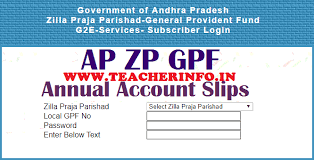The Information Technology Act And Media Law
Introduction:-
India, like all countries, is increasingly facing a situation where legal frameworks that made sense before the explosive growth of the internet are proving incomplete or in some cases being re-purposed as blunt instruments of state power. Reforms are urgently needed, and the pressure for reform begins with awareness. This is the first in a series of posts seeking to raise popular understanding of issues of Indian law.
The past few years have seen an explosion in Internet usage in India with approximately a tenth of the country’s population now considered active Internet users. While the increased access to and use of online resources is undoubtedly beneficial to the country as a whole, there continue to remain numerous shortcomings ranging from lack of access in rural areas, skewed sex ratios of those accessing the Internet, and lack of adequate infrastructure, etc. There are also problems with the legal framework governing the Internet ecosystem in India that have captured public attention over the last two years, with the media focusing particularly on censorship and surveillance .
Censorship Under The It Act:
Indian law regarding censorship in traditional media is fairly developed and relatively liberal (at least in theory). Article 19(1)(a) of the Constitution protects the right to free speech and expression irrespective of the medium of communication. While the Courts have interpreted this right in a broad manner, Article 19(2) permits reasonable restrictions to be placed on the right in view of public policy concerns.
Purportedly in accordance with A 19(2), the IT Act contains numerous provisions that can be used to censor online content – notably in Sections 66A, 69A and 79. Most tellingly almost all these instances involve executive action with no system of judicial oversight – in fact under Section 79, the law actively encourages private censorship.
Section 66A has probably received the most media attention over the last year or so due to the many arrests made under this section (notably the arrest of two teenage girls in Palghar, Maharashtra in November 2012.This provision criminalizes the practice of sending an offensive message using a computer resource. The biggest concern in this regard is the extremely wide and ambiguous scope of the provision which could include anything that is considered offensive, menacing, that causes annoyance or inconvenience, that insults, that causes enmity, hatred or ill-will, etc. The punishment for such an offence is three years imprisonment.
Two other sections of the Act - Section 69A and 79 have received far less attention from the public, possibly as these are substantive provisions of law and not punitive provisions (as S 66A is). These provisions however set up a system of censorship that is arguably unconstitutional.
Section 69A authorizes the government to block any content from being accessed by the public on various grounds. An intermediary who fails to comply with directions to block content is liable to be imprisoned for up to seven years.
Section 79 of the IT Act requires an Intermediary to observe certain guidelines in order to avail of exemption from liability. These guidelines (issued in 2011) mandate that the Intermediary must take down any information that is inter alia grossly harmful, harassing, blasphemous, defamatory, obscene, pornographic, paedophilic, libellous, invasive of another's privacy, hateful, or racially, ethnically objectionable, disparaging, relating or encouraging money laundering or gambling, harm minors in any way or otherwise unlawful in any manner whatever, acting upon private complaint or if they discover such content on their own .
Social media law India is regulated by the Information Technology Act which was enacted in the year 2000 to regulate, control and deal with the issues arising out of the IT. Social networking media is an “intermediary” within the meaning of Indian information technology act 2000 (IT Act 2000). Thus social networking sites in India are liable for various acts or omissions that are punishable under the laws of India.
Section 66A of the IT Act has been enacted to regulate the social media law India and assumes importance as it controls and regulates all the legal issues related to social media law India. This section clearly restricts the transmission, posting of messages, mails, comments which can be offensive or unwarranted. The offending message can be in form of text, image, audio, video or any other electronic record which is capable of being transmitted. In the current scenarios such sweeping powers under the IT Act provides a tool in the hands of the Government to curb the misuse of the Social Media Law India in any form.
However, in 2015, in a landmark judgments upholding the right to free speech in recent times, the Supreme Court in Shreya Singhal and Ors. Vs Union of India , struck down Section 66A of the Information & Technology Act, 2000. The ruling which is being lauded by the common man and legal luminaries alike, found the Cyber law provision to be open-ended, vague and unconstitutional owing to the restriction it caused to the Indian citizens’ right to free speech.
Conclusion:
The issue of censorship of online content in India is a tricky one – the Constitution permits censorship in certain limited circumstances. This is a problem as due to the global nature of the Internet, it is very difficult to control content being uploaded in foreign countries and being viewed in India. Further, the thorny issue of who gets to decide to censor content and under what circumstances is a nuanced debate – which unfortunately tends to be hijacked by arguments based on security concerns / need for broad emergency provisions. Most attempts at censorship have therefore been haphazard and inconsistent.
Further, issues raised by communal, defamatory and violent content (particularly towards women) continue to receive very little attention. Particularly worrying is the lack of accountability, transparency and oversight in the system. One hopes that the Supreme Court will take appropriate action by striking down the relevant provisions in the IT Act thereby forcing the legislature and executive to put in place a more open, equitable and just systems of censorship that truly abides by the Constitutional spirit embodied in A 19(1)(a).
References
1. Empowering people through information: A case study of India’s Right to Information Act The International Information & LibraryReview,Vol40,Issue3,sep2008,pp 148-152, Tariq Ashraf
2. The retention of personal information on line: A call forInternational RegulationonprivacyLaw”Computer Law&Security Review, Vol 29,Issue 3,June 2013,pp246-254, Susan Corbatt
3. Section 79; Information Technology Act, 2000
4. Section 66A; Information Technology Act, 2000
5. Nimisha Jaiswal, ‘Are Police Misusing Laws to Punish Social Media Users? NDTV Investigates’,NDTV15(12.12.2017) <‘https://www.ndtv.com/india-news/are-police-misusing-laws-to-punish-social-media-posts-ndtv-investigates-1786515> (accessed on 28.10.2018)
6. Vipin Maneklal And Ors. vs Sushil Kumar And Ors, AIR 1983 Delhi 307
7. Shreya Singhal and Ors. Vs Union of India, WRIT PETITION (CRIMINAL) NO.167 OF 2012
8. S. 295A, Indian Penal Code, 1860
9. S.153A, Indian Penal Code, 1860
10. S.499, Indian Penal Code, 1860
11. S505, Indian Penal Code, 1860
12. S.509, Indian Penal Code, 1860









